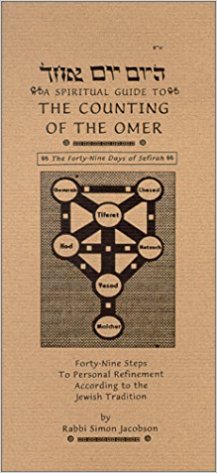
Each night’s count is followed by reciting Psalm 67 and a few short petitions for spiritual cleansing and renewal. Each evening, the counter recites a blessing: “Blessed are You, LORD Our God, King of the Universe, Who has sanctified us with his commandments and commanded us to count the Omer” and states, “Today is X days of the Omer.” After the first six days, one counting also includes the number of weeks, for example: “Today is 13 days, which is one week and six days of the Omer.” If one misses an entire day’s count, the counting continues without reciting a blessing. We enter this journey through a countdown beginning from the second night of Passover through the evening of Shavuot. The Counting of the Omer takes us on a spiritual journey. Fifty days later, when Shavuot had come, the disciples were all together in the Temple in Jerusalem when “They were all filled with the Ruach ha-Kodesh (God’s Holy Spirit) and began to speak in other tongues as the Ruach enabled them to speak out” (Acts 2:4).

– ( 1 Corinthians 15:20).Īfter His resurrection, Yeshua appeared to His disciples in Jerusalem and commanded them, saying, “I am sending the promise of My Father upon you but you are to stay in until you are clothed with power from on high” (Luke 24:49). Just as the firstfruits offering of the barley made all the rest of the barley harvest possible, so too the resurrection of the Messiah makes the resurrection of the dead possible. Paul used the image of the Omer and the grain harvest when speaking of Yeshua’s resurrection. We remember the resurrected Yeshua, as all His post-resurrection appearances fell within this period. This link makes the Counting of the Omer a season of particular significance.

That day, the same day of Yeshua’s resurrection, began the fifty-day count to the festival of Shavuot. Sunday morning, while the women discovered Yeshua’s empty tomb, the high priest Caiaphas was busy mixing the barley flour with oil and frankincense to prepare it as a bread offering for the first Omer offering. Sandwiched between the two events lies a fifty-day period of spiritual growth that the Children of Israel needed to graduate to the status of becoming God’s “special” nation.ĭrawing on this connection between Passover and Shavuot, we find a third significance of the period of the Omer. The “maturing” process of going from matzah to chametz bread symbolizes the spiritual maturing process of going from freedom from slavery to the revelation of the Almighty and the receiving of His Torah at Mount Sinai.

Passover centers around matzah (unleavened) bread ( Exodus 13:6-7), and fifty days later, Shavuot includes an offering of two chametz (leavened) loaves-the only holiday when chametz is brought on the altar all year (see Leviticus 2:4-6, 11). We can see the connection between Passover and Shavuot as we reflect on how the holidays are celebrated.

Additionally, the Torah prohibited using or eating any of the barley and wheat crops until the offering of the Omer, the first of the new grain, was brought up to the Lord.īeyond its agricultural significance, the Omer marks the fifty days between the Exodus from Egypt and the giving of the Torah on Mount Sinai. This practice can be compared to a modern-day employee or business cheerfully giving to the needs of the community so that “the One who supplies seed to the sower and bread for food will supply and multiply your seed and increase the harvest of your righteousness” (1 Corinthians 6:10, see also vv. This Torah precept battled against the agricultural customs of the Canaanite nations that related the growth of grain to various local gods (see Hosea 2) to assure that the Children of Israel would thank the proper God and not fall into the traps of idolatry. During this festival, the Torah commands the Israelites to bring the first sheaf, or “ Omer” in Hebrew, of the harvest to the Temple before consuming the new barley and wheat crops. The Torah roots this festival in the thanksgiving offering of the first fruits of the barley harvest ( Leviticus 23:9-10 Deuteronomy 16:9-12).


 0 kommentar(er)
0 kommentar(er)
